The Baltic States, St. Petersburg, and Moscow
September 26 - October 14, 2013
Part Five - Moscow, Russia
Page Three - Moscow Metro and Red Square
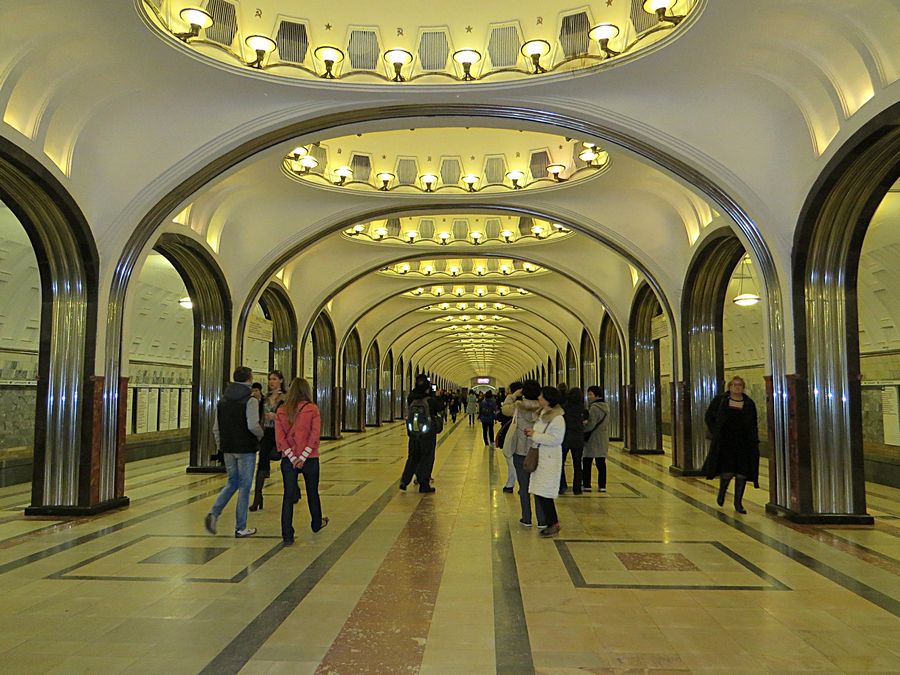
The Moscow Metro is a rapid transit system serving Moscow, Russia and the
nearby Moscow towns of Krasnogorsk and Reutov. Opened in 1935,
it was the first underground railway system in the Soviet Union. As of 2013,
the Moscow Metro has 190 stations and its route length is 197.3 mi.
The system is mostly underground. The Moscow Metro is the world's
second most heavily used rapid transit system after Seoul Metropolitan
Subway.

The Moscow Metro was one of the USSR's most extravagant architectural
projects. Stalin ordered the metro's artists and architects to design a
structure that embodied radiance or brilliance and a radiant future.
With their reflective marble walls, high ceilings and grandiose chandeliers,
many Moscow Metro stations have been likened to an "artificial
underground sun." This underground communist paradise reminded
its riders that Stalin and his party had delivered something substantial
to the people in return for their sacrifices. Most importantly, proletarian
labor produced this. The metro design's emphasis on verticality was a
reinforcement of Stalin's deification. He directed his architects to design
structures which would encourage citizens to look up, admiring the
station's art (as if they were looking up to admire the sun and—by
extension—him as a god. Another aspect of the apotheosis propaganda
was the metro's electrification; the Moscow Metro's chandeliers are one
of the most beautiful and technologically advanced aspects of the project.


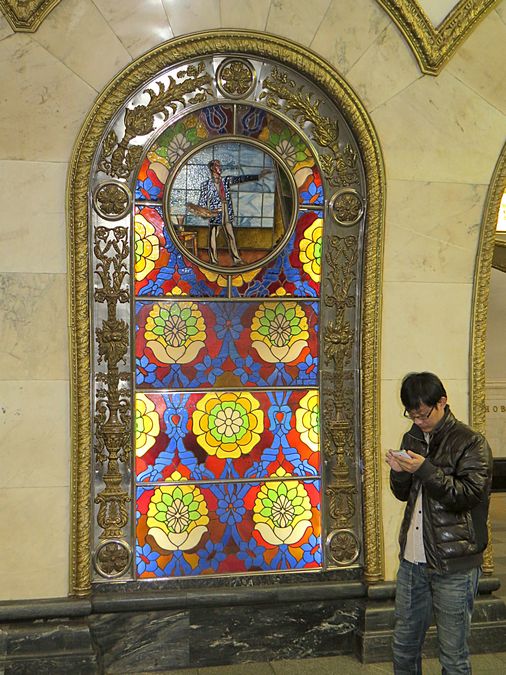
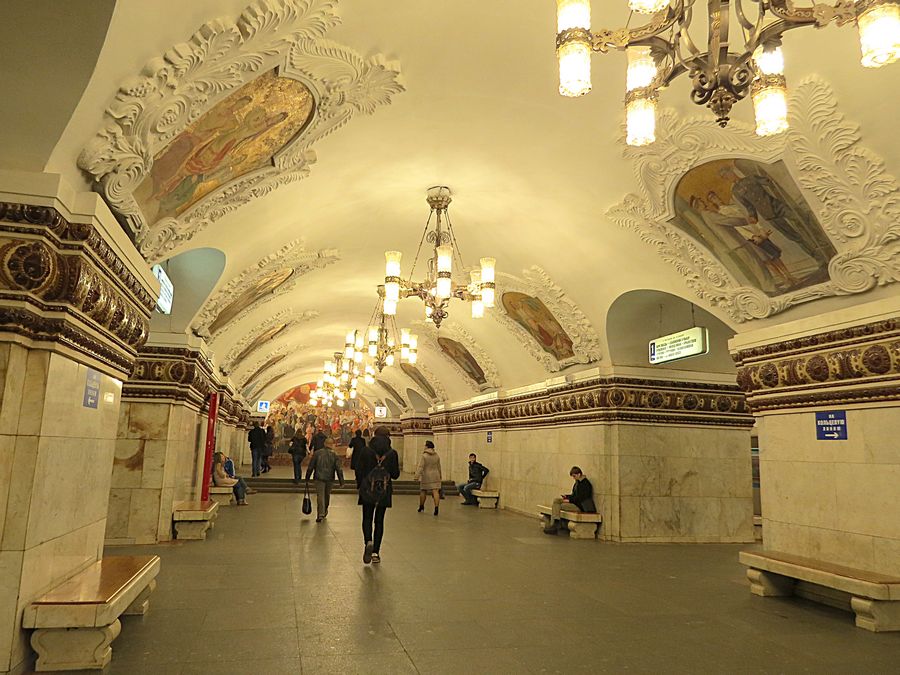
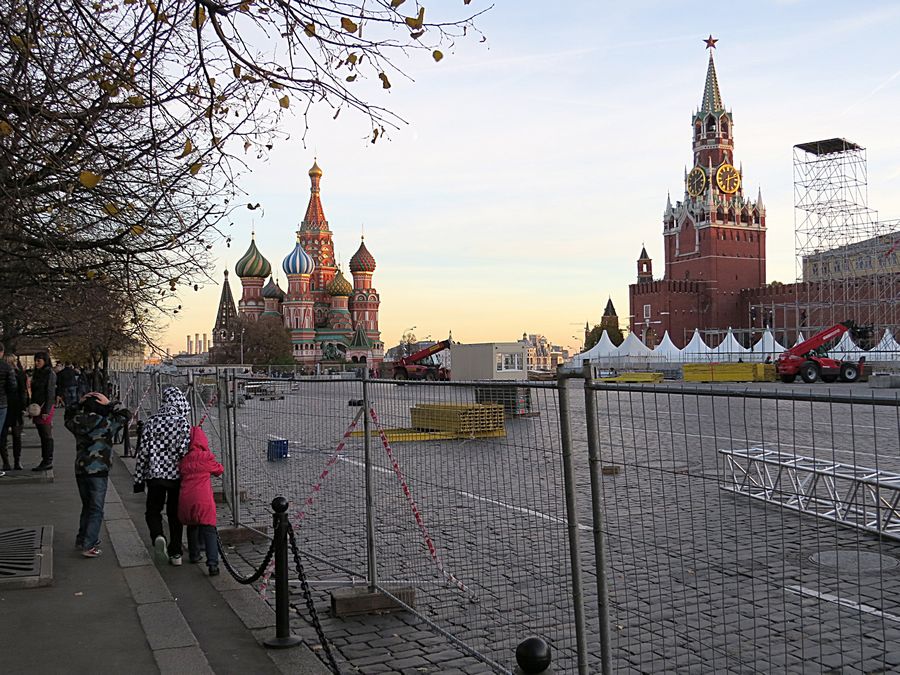
Some of us went back to Red Square during free time. Part of it was blocked
off while we were on this trip due to a recently completed Sochi Olympics event.
The Spasskaya Tower (right) viewed from the Red Square with Saint Basil's
Cathedral (left).The Spasskaya Tower, translated as "Saviour Tower" is the
main tower with a through-passage on the eastern wall of the Moscow
Kremlin, which overlooks the Red Square. The Spasskaya Tower was built
in 1491 by an Italian architect Pietro Antonio Solari.
According to a number of historical accounts, the clock on the Spasskaya
Tower appeared between 1491 and 1585. It is usually referred to as the
Kremlin chimes and they designate official Moscow Time. The tower gate
was once the main entrance into the Kremlin. In czarist times, anyone
passing through the gates had to remove their headgear and dismount
their horses. This tradition was broken in the soviet era. Cars approached
the gate head on from the place of skulls and the road beside GUM.
In order to pass through the gate, you had to be a head of state, top
politburo member, or top government member. All other traffic was
routed through the borovistky gate. The spassky gate posed an issue
following the collapse of communism. In the new capitalist and market
based economy, the passage of vehicles disrupted the flow of pedestrians
to GUM and other shopping centers, even though few vehicles actually
passed through the gate each day. In 1999, the decision was made to finally
close the gate to all traffic. The signal lights and guard platforms still remain.
Nowadays, the gate opens to receive the presidential motorcades on
inauguration day, for the victory parades, and to receive the new years' tree.
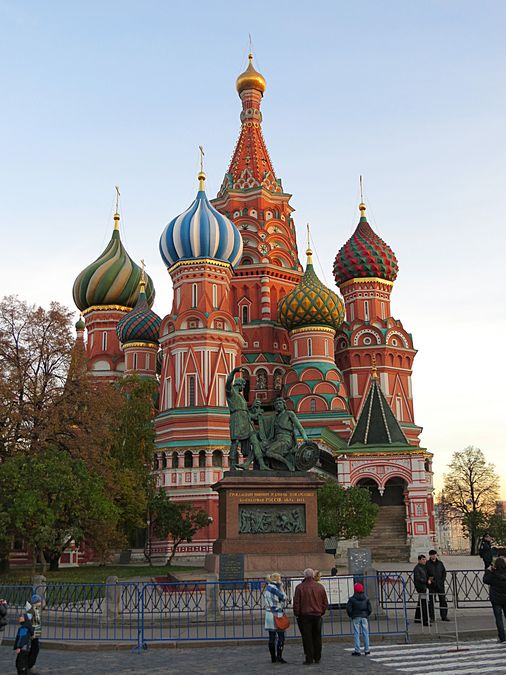
Saint Basil's proper name is the Intercession Cathedral, named for the feast
day on which the army of Ivan IV the Terrible captured the city of Kazan in
1552. But one chapel is built over the grave of Vasily (Basil) the Blessed,
whose name has stuck to the whole church.

When we went back to Red Square, it was late afternoon, so we were able to see
the effect
of changing light on the Cathedral and Red Square.

Red Square is famous for the grand military parades staged here during the
Soviet period. The name dates back to the 17th century. The adjective krasny
originally meant beautiful, but over centuries the meaning of the word
changed to red, hence the present name. Lenin's Mausoleum is in the background
on the left, protruding out from the Kremlin Wall. GUM is on the right.

Red Square is most impressive at night when it is illuminated by floodlights,
with the ruby red stars atop the Kremlin towers glowing against the dark sky.
There are 5 stars in total, one for each of the tallest towers. They first
appeared in 1937 replacing the double-headed eagle, a tsarist symbol. The
glass stars are lighted from the inside and are designed to turn with the wind.
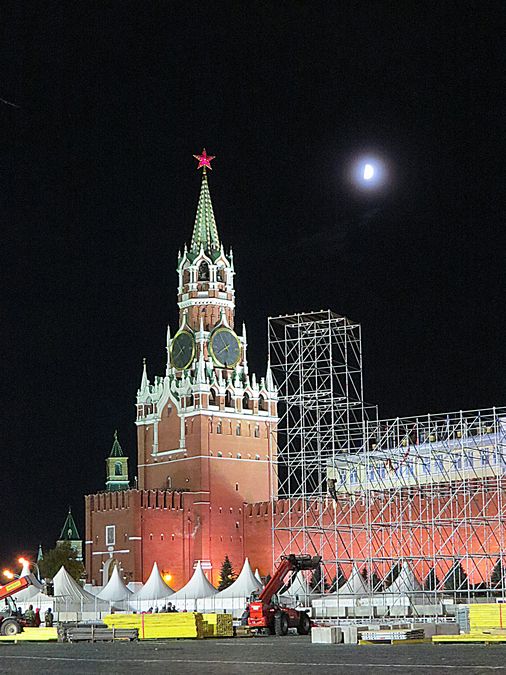
The Spasskaya Tower (Saviour Tower)
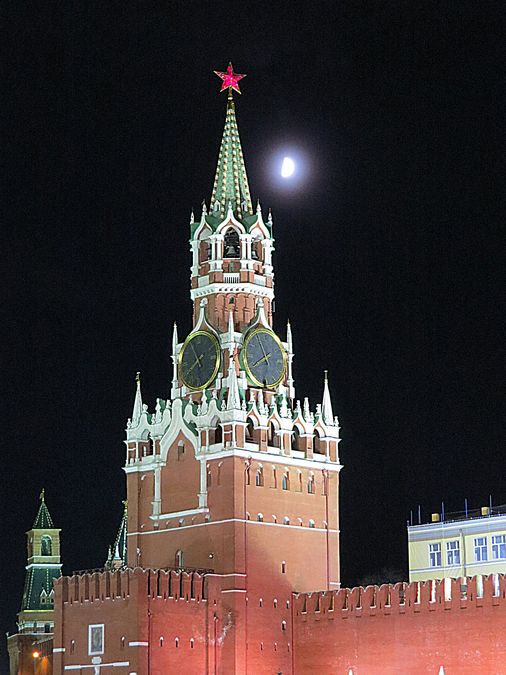
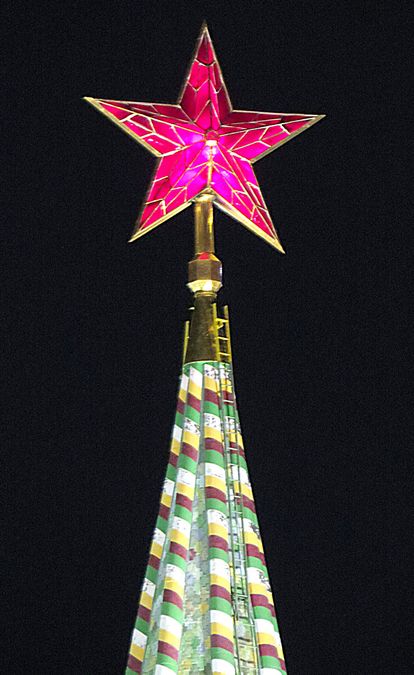
Red Star above Saviour Tower
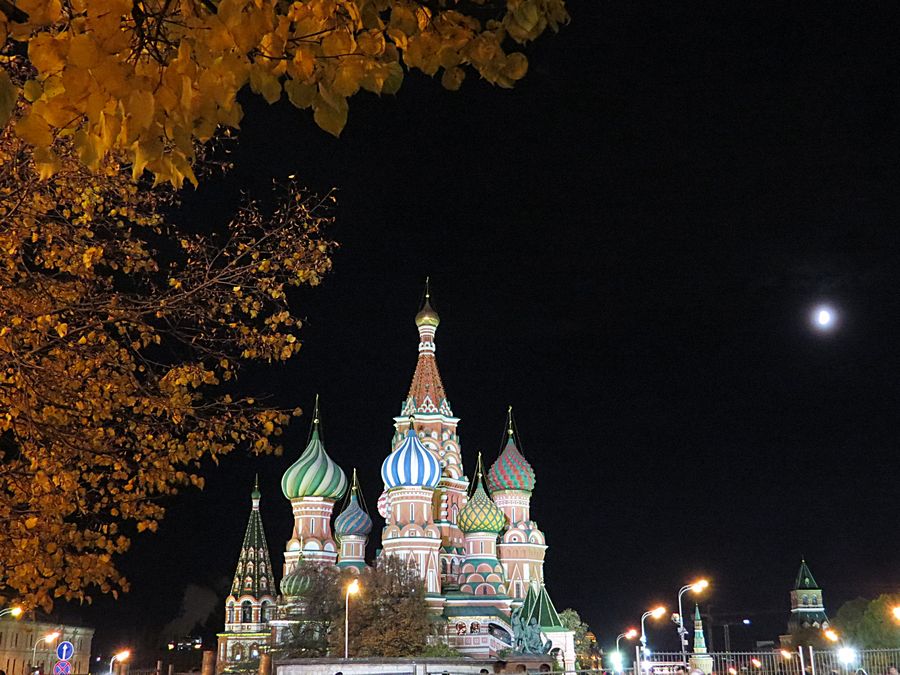

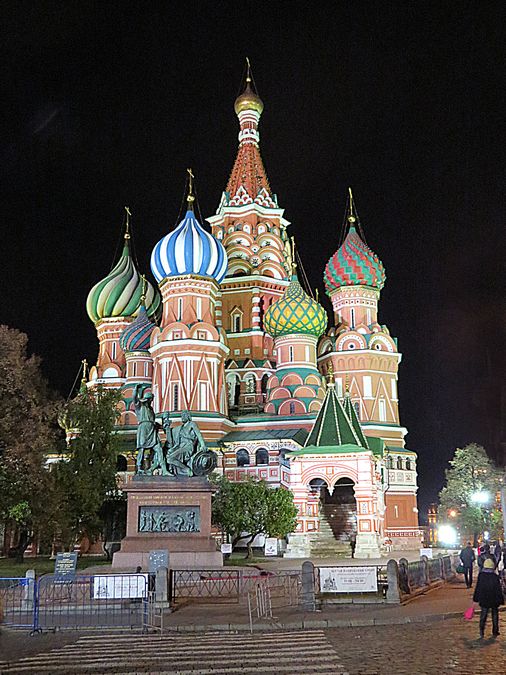
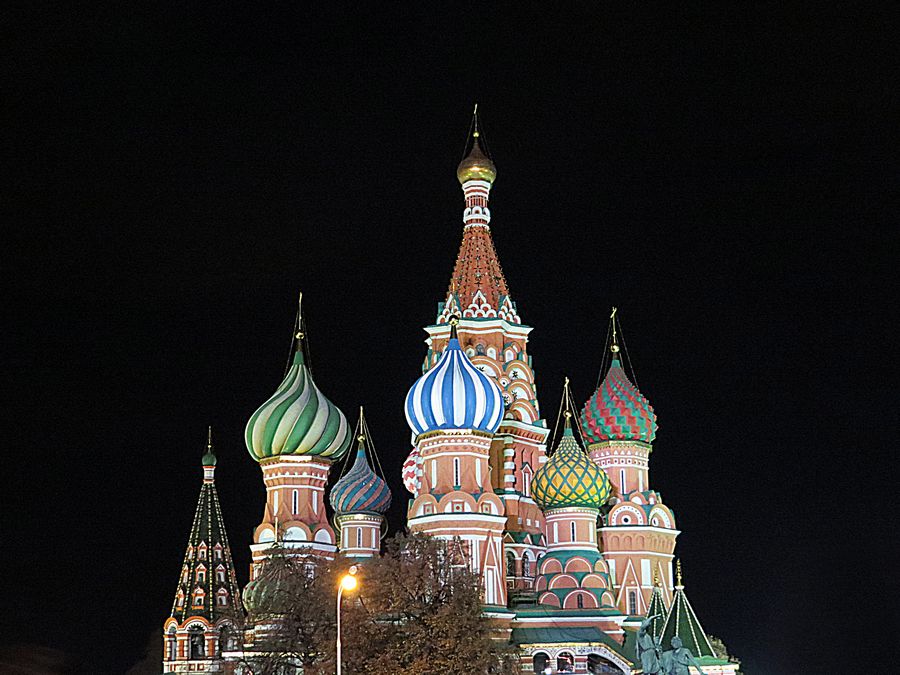
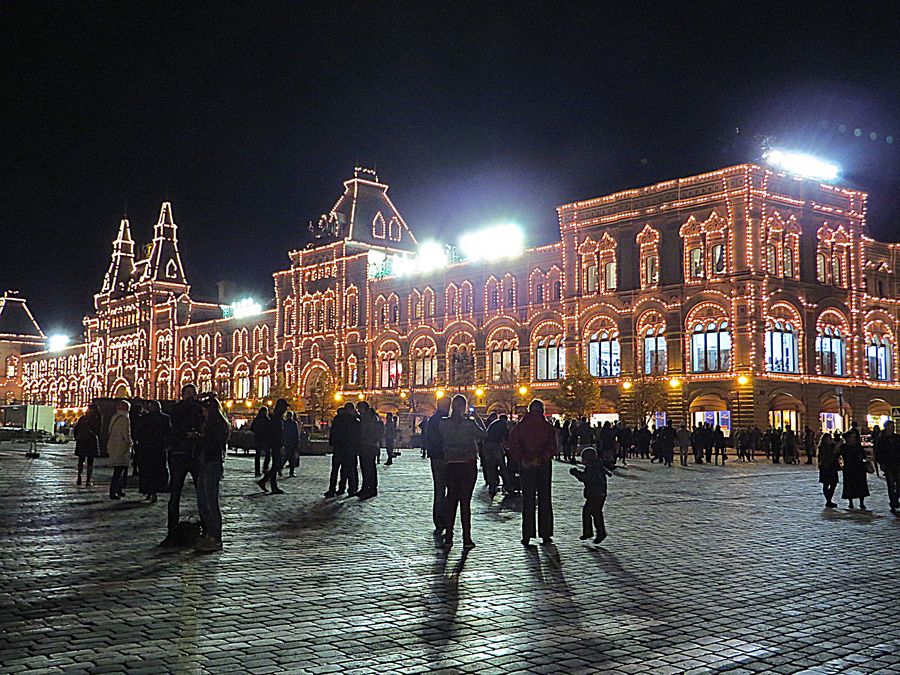
The GUM shopping mall along Red Square lit up at night.
Inside GUM are 3 long passages with three stories of shops that run the
length of the building. A glass roof covers each passage.
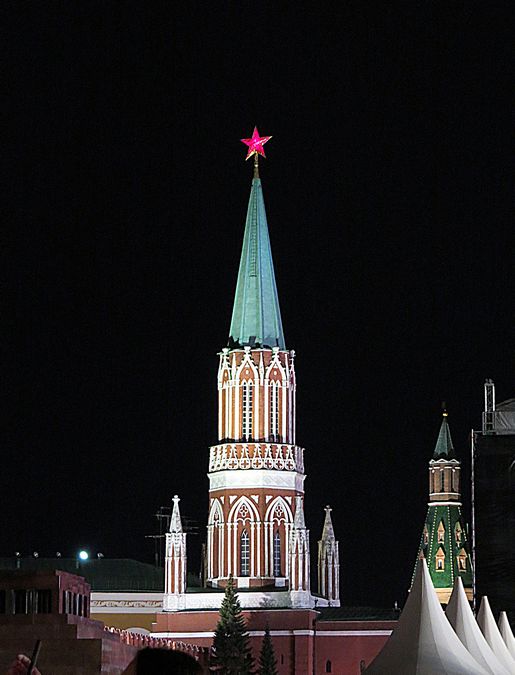
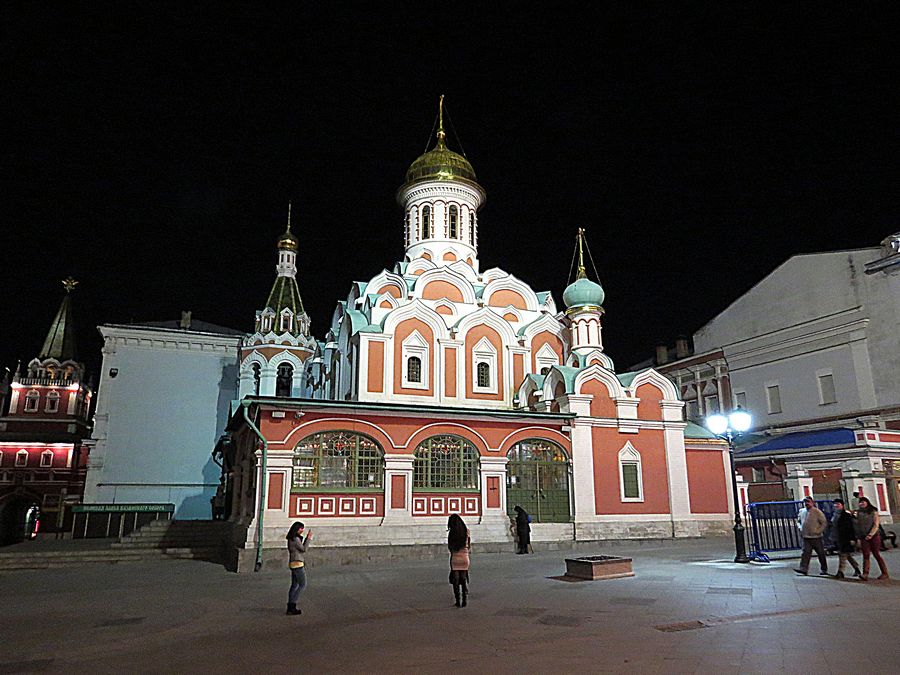
Kazan Cathedral along Red Square at night.
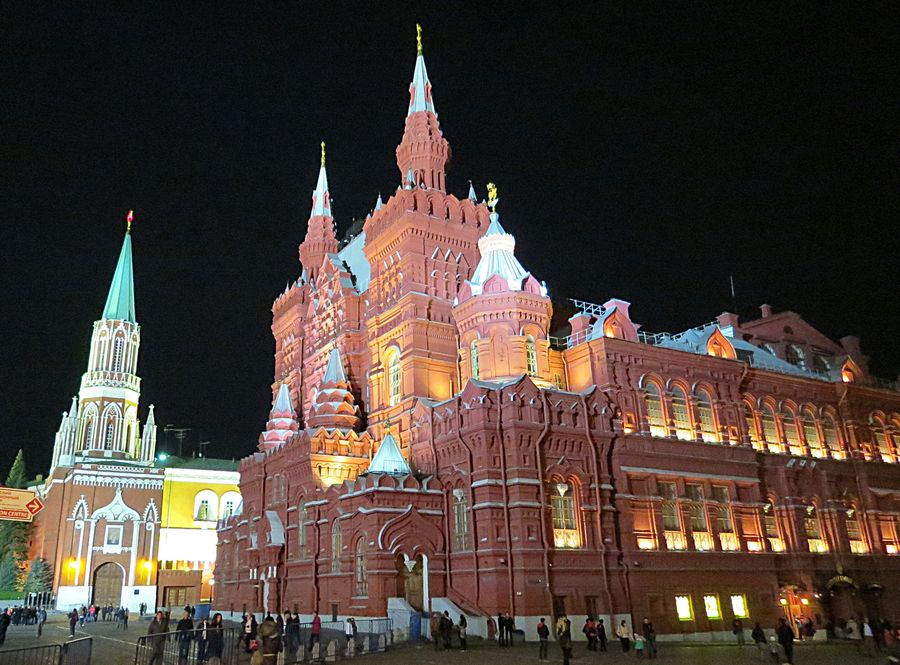
The State Historical Museum at night.
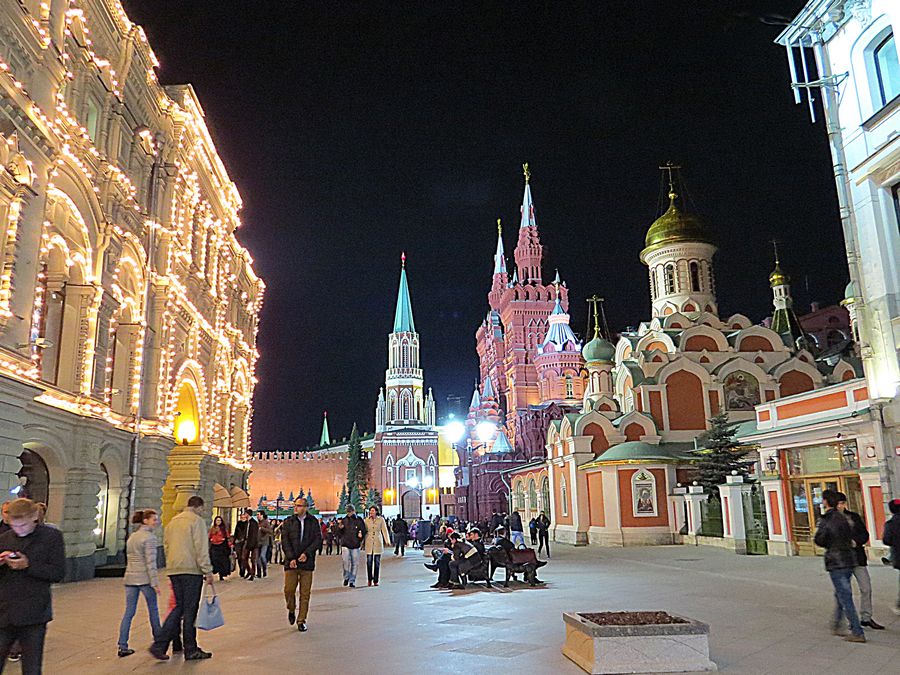
Shopping walkway with the GUM to the left and Kazan Cathedral to the right.

Back side of the GUM (pronounced "goom")
Link to Page Four -The Kremlin
Link to Part One - Lithuania
Link to Part Two - Latvia
Link to Part Three - Estonia
Link to Part Four - St. Petersburg, Russia
Pat's Home Page